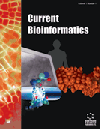- Home
- A-Z Publications
- Current Bioinformatics
- Previous Issues
- Volume 4, Issue 2, 2009
Current Bioinformatics - Volume 4, Issue 2, 2009
Volume 4, Issue 2, 2009
-
-
Biophysical Model of Sinoatrial Node's Bioelectrical Activity to Simulate Heart Rate Variability in Normal and Diabetic Patients
More LessAuthors: Dhanjoo N. Ghista, Roustem Miftahof, Rajendra U. Acharya and Kamlakar DesaiHeart rate variability (HRV) is a reliable and powerful tool for the assessment of sympathetic and parasympathetic functions of the autonomic system. Hence HRV is widely used as tool to monitor post myocardial-infarction patients and also diabetes subjects, because as a chronic side effect diabetes affects peripheral and autonomous nervous system. In order to determine how this HRV decreases in diabetic patients, we hav Read More
-
-
-
The Next Step in Voice Assessment: High-Speed Digital Endoscopy and Objective Evaluation
More LessThe data gained by digital high-speed endoscopy and its objective analysis provide many new possibilities to enhance the understanding and investigation of laryngeal dynamics and its pathologies. High-speed imaging overcomes disadvantages of the currently used technique of videostroboscopy. Additionally, objective evaluation of the dynamics finally enables the beginning of evidenced based diagnostics in end Read More
-
-
-
Current Trends in Pseudogene Detection and Characterization
More LessAuthors: Eric C. Rouchka and I. Elizabeth ChaPseudogenes are homologous relatives of known genes that have lost their ability to function as a transcriptional unit. Three classes of pseudogenes are known to exist: duplicated pseudogenes; processed or retrotransposed pseudogenes; and unitary or disabled pseudogenes. Since pseudogenes may display a number of the characteristics of functional genes, they pose a unique set of problems for ab initio gene pre Read More
-
-
-
Feature Extraction Techniques for Protein Subcellular Localization Prediction
More LessAuthors: Qing-Bin Gao, Zhi-Chao Jin, Cheng Wu, Ya-Lin Sun, Jia He and Xiang HeTo understand the structure and function of a protein, an important task is to know where it occurs in the cell. Thus, a computational method for properly predicting the subcellular location of proteins would be significant in interpreting the original data produced by large-scale genome sequencing projects. Prediction of protein subcellular localization is now a hot topic in bioinformatics community, which has been extensi Read More
-
-
-
Computer-Assisted Automatic Classifications, Storage, Queries and Functional Assignments of Orthologs and In-Paralogs Proteins
More LessThe automatic classification of proteins into groups is one of the major objectives for mining the increasing amount of data released by genomic and metagenomic sequencing projects. Ortholog and in-paralog accurate classification is motivated by the notion of descriptive biology. Facing the tremendous quantity of very complex protein datasets, one way to understand biological function, structure conservation as well as evol Read More
-
-
-
miRNA Microarray Technology in miRNA Profiling
More LessAuthors: Shu-Ting Wang, Cai Li and Lei LiumiRNAs are a new class of non-coding small RNAs that exist in many species. They play important roles in many physiological and pathophysiological processes by inhibiting the expression of target RNAs. Recent advances in miRNAs are beginning to be predicted and identified using several technological approaches, such as miRNA cloning, hybridization with various probes, and PCR-based detection. In the past Read More
-
-
-
Comprehensive Description of Signal Transduction Networks by Quantitative Proteomics and Systems Biology
More LessSignal transduction systems are known to widely regulate complex biological events such as cell proliferation and differentiation. Although numerous biological analyses have revealed many of the key molecules and events involved in cell signaling, an integrative view of this complicated system cannot provide a fundamental theory on the regulation of the entire network without analyzing the dynamic behavior of these m Read More
-
-
-
Bioinformatic Approaches Used in Modelling Human Tremor
More LessBioinformatics is a field of information technology concerning the storage, retrieval, analysis, visualization, prediction and analysis of sets of data with biological or clinical significance. Tremor is a common movement disorder, for which pharmacological and neurophysiological models have been developed these last 3 decades, and which is at the frontier of biology, health sciences and computer technologies. Recently, new Read More
-
Volumes & issues
-
Volume 20 (2025)
-
Volume 19 (2024)
-
Volume 18 (2023)
-
Volume 17 (2022)
-
Volume 16 (2021)
-
Volume 15 (2020)
-
Volume 14 (2019)
-
Volume 13 (2018)
-
Volume 12 (2017)
-
Volume 11 (2016)
-
Volume 10 (2015)
-
Volume 9 (2014)
-
Volume 8 (2013)
-
Volume 7 (2012)
-
Volume 6 (2011)
-
Volume 5 (2010)
-
Volume 4 (2009)
-
Volume 3 (2008)
-
Volume 2 (2007)
-
Volume 1 (2006)
Most Read This Month
Article
content/journals/cbio
Journal
10
5
false
en


